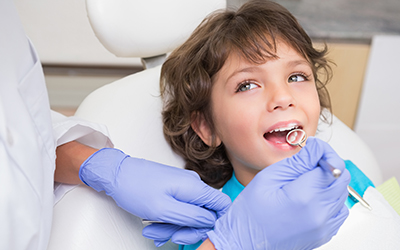Posted on Jul 22, 2024
File ID 43632713 | © Wavebreakmedia Ltd | Dreamstime.com
(720) 638-6114
Mon & Fri: 8-2; Tue-Thurs: 9-5


Bleeding gums in children can be alarming for parents. While occasional bleeding may be minor, persistent or excessive bleeding warrants attention.
Identifying the cause and taking appropriate measures can ensure your child's oral health and prevent potential complications. Consulting a pediatric dentist is crucial for accurate diagnosis and treatment.
The most common cause of bleeding gums in children is gingivitis, the early stage of gum disease. Gingivitis occurs due to plaque buildup, a sticky film of bacteria accumulating on teeth and gums. If not removed through regular brushing and flossing, plaque irritates the gums, causing inflammation and bleeding.
Poor oral hygiene practices, such as infrequent or improper brushing and lack of flossing, contribute to plaque accumulation and increase the risk of gingivitis. Good oral hygiene habits in children are essential for preventing gum disease and maintaining a healthy smile.
Bleeding gums may also occur during teething as new teeth erupt through the gums.
While teething-related bleeding is usually harmless, monitoring the situation and consulting a pediatric dentist if it is excessive or persistent is essential. They can assess the child's oral health and rule out underlying conditions.
Certain dietary factors can contribute to bleeding gums. A diet high in sugary or acidic foods can increase the risk of plaque buildup and gum irritation. Additionally, vitamin deficiencies, particularly vitamin C deficiency, can weaken blood vessels and lead to bleeding gums.
In rare cases, bleeding gums may be a symptom of an underlying medical condition, such as a bleeding disorder or leukemia. If your child experiences persistent or unexplained bleeding gums, a thorough evaluation by a pediatric dentist and other healthcare professionals is necessary.
Bleeding gums in children should not be ignored. While minor bleeding may resolve on its own, persistent or excessive bleeding warrants a visit to a pediatric dentist. They can identify the underlying cause, recommend appropriate treatment, and provide guidance on maintaining good oral hygiene for your child's long-term dental health.
Contact Little Rockies Kids Dental for professional children's pediatric dentistry services. Visit our pediatric dental office or call (720) 638-6114 to book an appointment.
Hours:
Monday & Friday: 8:00 AM - 2:00 PM
Tues, Wed, Thurs: 9:00 AM - 5:00PM
Closed: Select Mondays and Fridays